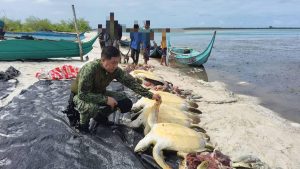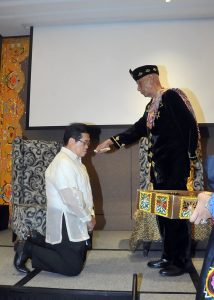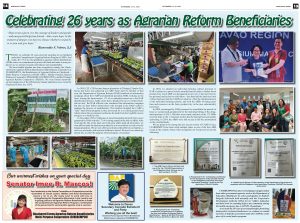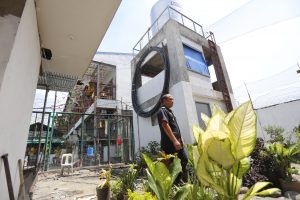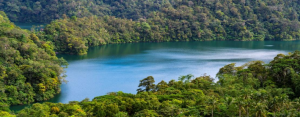
Sibulan, Negros Oriental – Lake Balinsasayao is reputedly among the most beautiful bodies of water in the Visayas, its shimmering surface reflecting the vibrant turquoise of the heavens, rung by verdant walls of green, broken only by rolling mists.
If only we could see it.

We’re perched on a view deck, drenched by sheets of near-horizontal rain. With a crew from the country’s top television network, we’re trying to catch a glimpse of the lake below, but all we can see is a solid wall of white. We couldn’t just see the mist. We were inside it.
By a freak twist of fate, our visit to the famed lake coincided with the arrival of a powerful storm. Initially hoping to photograph the lake’s colorful sunbirds and flowerpeckers, we now had no choice but to wait for the weather to clear.
“Balinsasayao’s twin lakes are known mostly by tourists escaping the seaside humidity of Dumaguete, but they also serve as a vital watershed for the province of Negros Oriental,” explained Provincial Environment and Natural Resources Officer (PENRO) Viernov Grifalde a day before.
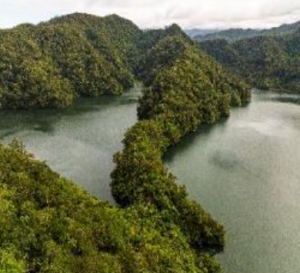 The twin lakes of Balinsasayao and Danao serve as headwaters for five major river systems including the Amlan, Ayuquitan, Hinotongan, Okoy and Cauitan Rivers. “These natural water reservoirs collect rainwater, supplying half-a-million people with potable water all year.”
The twin lakes of Balinsasayao and Danao serve as headwaters for five major river systems including the Amlan, Ayuquitan, Hinotongan, Okoy and Cauitan Rivers. “These natural water reservoirs collect rainwater, supplying half-a-million people with potable water all year.”
Nearly 60% of the Philippines’ land area forms 142 critical watersheds. Watersheds work best when provided with healthy forests, as the trees help absorb rainwater. The country’s watersheds however, are facing numerous threats, including illegal logging, charcoal-making and destructive kaingin or slash-and-burn farming.
“We’ve fortunately managed to minimize these activities by combining effective enforcement and field patrols with a vigorous communications and public awareness campaign,” adds Viernov. “For centuries, the Balinsasayao Twin Lakes have protected both upland and lowland communities from the worst effects of storms, floods and droughts by stabilizing the local climate and water distribution. We at the Department of the Environment and Natural Resources (DENR) have been doing our best to protect the park, so our people can continue reaping its natural services.”
Declared as a protected area in 2000, the Balinsasayao Twin Lakes Natural Park spans 8016.05 hectares and is among six featured areas for the Year of the Protected Areas (YoPA), a yearlong campaign to highlight the critical role played by the country’s 247 protected areas for both people and nature.
Launched in May 2022, YoPA is being spearheaded by the Department of Environment and Natural Resources (DENR), the United Nations Development Programme’s Biodiversity Finance Project (UNDP-BIOFIN), the Department of Tourism (DOT), the Department of Interior and Local Government (DILG) and various local governments.
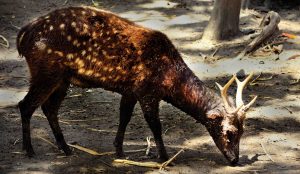
The campaign’s six featured protected areas include Masbate’s Bongsanglay Natural Park, Occidental Mindoro’s Apo Reef Natural Park, Samar Island Natural Park, Davao Oriental’s Mt. Hamiguitan Range Wildlife Sanctuary, Camiguin’s Mt. Timpoong Hibok-Hibok Natural Monument, plus Negros Oriental’s Balinsasayao Twin Lakes Natural Park, home to endangered flora like the Almaciga tree and rarely-seen fauna like the reclusive Visayan Spotted Deer.
“Birdwatchers come from across the sea to see and photograph the colorful birds in the park. The world’s rarest deer are said to live right in those hills,” points DENR’s Sargie Dura when the mists briefly lifted to allow us a fleeting glimpse of the jade-hued peaks above.
We’ve waited all morning and with worsening weather, we settled for lunch – the highlight being various dishes made from ‘pako’ or vegetable fern.
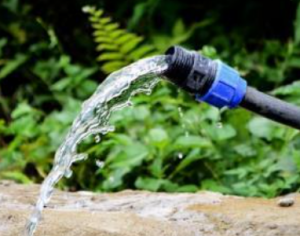
It was either the bone-chilling 16-degree cold or the potent vinegar lacing the fern salad I was crunching on, but I seemed to have a watershed moment – that all the world’s protected areas are reservoirs or ‘reserves’ for life: from the tiny ferns grown and harvested for salad to deer that were driven up the most inaccessible areas. These reserves also produce the basic elements for life – clean water, clean air and in the case of the Balinsasayao Twin Lakes Natural Park, clean energy through its active geothermal vents.
“Our planet’s protected areas aren’t just great places to visit. They all serve key ecological functions – from providing habitats to endangered wildlife to generating the water which keeps our faucets flowing,” concludes BIOFIN Global Manager Onno van den Heuvel. “This World Wetlands Day, let’s visit and support our local watersheds, our local reservoirs of life.”
About the Biodiversity Finance Initiative (BIOFIN)
BIOFIN was launched in 2012 and seeks to address the biodiversity finance challenge in a comprehensive manner – building a sound business case for increased investments in the management of ecosystems and biodiversity, with a particular focus on the needs and transformational opportunities at the national level. For more information: http://www.biodiversityfinance.net


